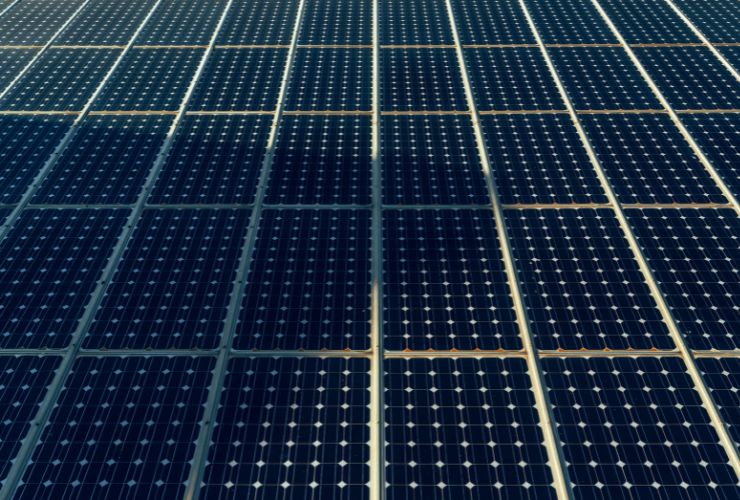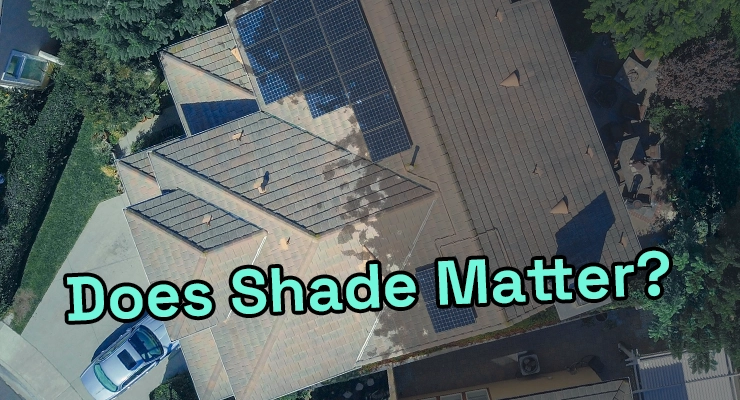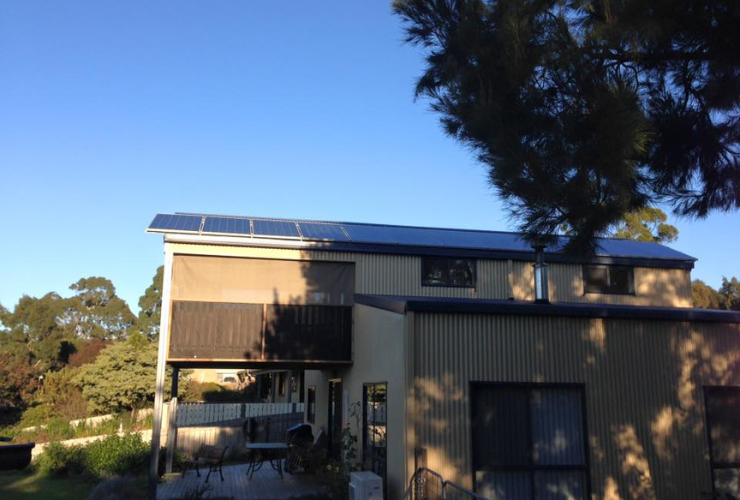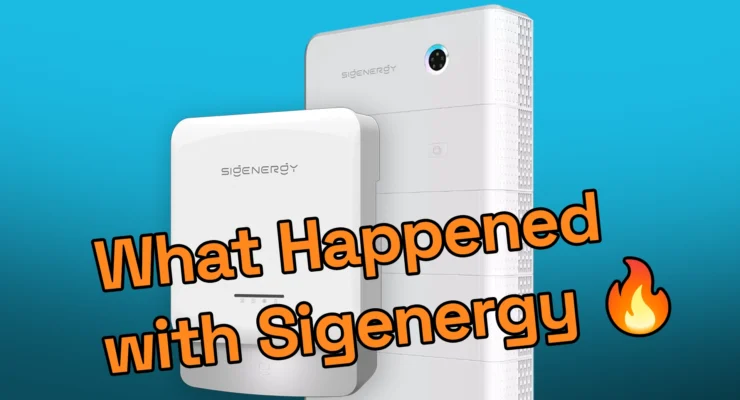Fast read
Yes, shading on solar panels significantly affects a solar battery by drastically reducing the amount of energy available to charge it. While shade doesn't damage the battery directly, it can cripple your system's output, especially with standard string inverters. Using advanced technologies like microinverters or DC power optimisers is the most effective way to minimise this impact and ensure your battery gets as much charge as possible.
Are solar batteries affected by shading on solar panels?
Shading is one of the most common and critical concerns for Australians considering a solar and battery system. A nearby tree, a chimney, or even a neighbour’s second-storey extension can cast shadows that move across your roof during the day. This leads to a crucial question: if your panels are shaded, what does that mean for your expensive new battery?
The short answer is that while the shade won’t physically harm your battery, its impact on your system’s ability to generate and store energy can be profound. A shaded system is an underperforming system, and an underperforming system can’t fill your battery, undermining your goals of energy independence and lower power bills.
How shading directly impacts your solar panel’s energy production
To understand the effect on your battery, we first need to look at the panels. Solar panels are made up of many individual cells connected in series. In a traditional solar setup using a “string inverter,” the panels themselves are also connected in a series to form a ‘string’.
Think of this string like a garden hose. If you put a single kink in the hose, the water flow is restricted for the entire length. It’s the same with a string of solar panels; if just one panel is significantly shaded, the performance of every other panel in that same string can be dragged down to the level of the worst performer. Even a small shadow from a leaf or bird droppings can cause a disproportionate drop in power generation.
This “weakest link” effect means your 6.6kW system might only produce a fraction of its potential power when even partial shading occurs, leaving very little energy for your home, let alone your battery.
The flow-on effect: less power for your battery
A solar battery charges using surplus energy—the electricity your panels generate that isn’t immediately used by your home’s appliances. The process is simple:
- Your solar panels generate DC electricity.
- Your home consumes what it needs.
- Any excess power is sent to charge your battery.
- Once the battery is full, any further excess can be sold to the grid.
When shading slashes your solar production, there is often no surplus energy to spare. The system might struggle to even cover your home’s immediate needs, meaning there’s nothing left over to send to the battery. As a result, you head into the evening with a partially charged or empty battery, forcing you to buy expensive electricity from the grid—the very thing you installed a battery to avoid.

Can technology solve the shading problem?
Thankfully, modern solar technology offers powerful solutions to combat the negative effects of shading. The choice of inverter technology is the single most important factor here.
- String Inverters: As discussed, these are vulnerable to the “weakest link” problem. While many modern string inverters, such as those from reputable manufacturers like Sungrow, have developed sophisticated shade management software, they can’t completely overcome the physical limitations of a string configuration.
- Module Level Power Electronics (MLPE): This is the game-changer for shaded roofs. Instead of managing all the panels as one group, MLPE technology optimises the output of each individual panel. There are two main types:
- Microinverters: These are small, individual inverters installed on the back of every single solar panel. This setup means each panel operates independently. If one panel is shaded, the others continue to produce at their full potential, unaffected. This maximises the total energy harvest from the array, providing significantly more power for your battery to charge.
- DC Power Optimisers: These small devices are also attached to each panel. They don’t convert the electricity to AC on the roof, but instead condition the DC power from each panel to ensure it’s producing its maximum output before sending it to a central string inverter. The result is very similar to microinverters—a shaded panel doesn’t drag down the performance of the others.
While MLPE systems typically have a higher upfront cost than a basic string inverter setup, the extra energy they generate on a partially shaded roof can deliver a strong return on investment.
Are some solar panels better for shaded roofs?
Yes, panel technology itself also plays a role in shade tolerance. Most modern panels include features that help mitigate small-scale shading.
- Bypass Diodes: These are now standard in solar panels. They act like a detour, allowing the electrical current to “bypass” a small, shaded section of cells within a panel instead of being blocked entirely.
- Half-Cut Cells: This design essentially splits the panel into two smaller, independent halves that operate in parallel. If the bottom half of the panel is shaded, the top half can continue to produce power normally, significantly improving shade tolerance compared to traditional full-cell panels.
- Advanced Cell Technology: Premium panels are increasingly designed for high performance in all light conditions. For instance, panels featuring All Back Contact (ABC) technology, like those from AIKO, have no visible connectors on the front, which increases the active surface area and boosts efficiency. This design also improves performance in low-light and partially shaded situations, helping to maximise every bit of sunlight for your battery.
Practical steps to take if your roof has shading
If you know your roof is affected by shade, being proactive is key.
- Get a Professional Assessment: A skilled installer accredited by Solar Accreditation Australia (SAA) will use specialised software to model how shadows will fall on your roof throughout the entire year, not just on the day of the site visit. SAA is now the sole operator for installer and designer accreditation under the government’s Small-scale Renewable Energy Scheme (SRES) after the transition from the previous Clean Energy Council scheme was completed in May 2024.
- Optimise Your Layout: An expert designer can create a panel layout that minimises time in the shade or split your panels into different groups to capture the sun at various times of the day.
- Manage Vegetation Responsibly: If trees are the issue, careful pruning may be an option. However, this should be approached with an environmental conscience. Tree removal should always be a last resort, and it’s vital to check local council regulations first.
Your battery is only as good as its fuel source
Ultimately, shading poses a significant challenge, not to the solar battery itself, but to its ability to charge. A battery without charge is just an expensive box on the wall.
By making smart, informed decisions about your system’s design—specifically choosing the right inverter technology (MLPE) for your situation and high-quality, shade-tolerant panels—you can overcome the challenge of shading. This ensures your system generates the maximum possible amount of clean energy, allowing you to charge your battery and take control of your power bills.
If you’re feeling uncertain about the best technology for your home’s specific shading issues, Your Energy Answers provides a free service to connect you with accredited local installers who can provide a detailed site assessment and expert, obligation-free advice.




